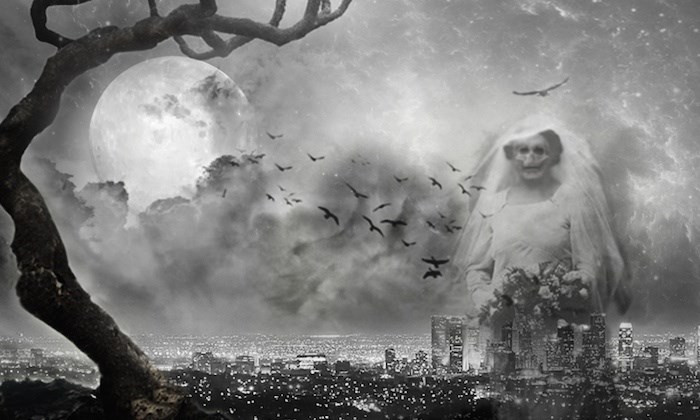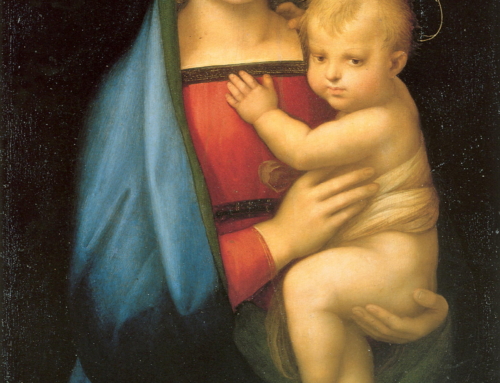from Guest blogger Paul Thigpen. Paul Thigpen PhD. is an editor at TAN books and the author of hundreds of article and dozens of books on the Catholic faith. His book of prophetic prophecy–The Burden– is a powerful pointer to the perilous times we live in with a passionate call to repentance. Learn more about The Burden here.
GHOSTS AND CATHOLIC FAITH
When I used to edit the national magazine called THE CATHOLIC ANSWER, this time of year, with the approach of Halloween, we always received the same question from our readers: What about ghosts? Do they fit into Catholic belief?
Some may quickly scoff at the idea as fanciful or superstitious. But belief in ghosts seems to have been universal across human cultures from the beginning of recorded history, and it’s based at least in part on countless reports that the living have in fact encountered them. Given the special significance that genuine ghostly phenomena would have for theology, Catholics should not so easily dismiss the possibility.
Do Ghosts Exist?
Our first task is to address the fundamental issue here: Do ghosts in fact exist? To answer that question we must define “ghost.”
According to Webster’s, the word means “the soul of a dead person, a disembodied spirit.” That seems to fit best the popular use of the term, so we’ll accept it as a working definition. We should keep in mind, then, that in the present discussion, “ghost” does not refer to an angel or demon, a poltergeist or even an extraterrestrial. Rather, it’s that part of a human being which is not corporeal (bodily), and which has been separated from the body through death.
With this definition, Catholics should readily affirm that ghosts do indeed exist. After all, it’s a fundamental part of Catholic belief that the human being is a union of soul and body; that at death, the soul and body are separated; and that after death, though the body usually decays, the soul survives, awaiting the Last Judgment, when the body will at last be raised and reunited with the soul.
From a Catholic perspective, then, not only the souls in hell and purgatory, but also the saints in heaven can be called ghosts (with the exception of Our Lady, who is not a disembodied spirit because her body was assumed with her soul into heaven). The question for Catholics, then, is not whether ghosts truly exist. They do. The more pressing question is whether disembodied human souls, in the present time before the Last Judgment, are able to manifest themselves to those still alive on earth.
Evidence From Scripture
Can the dead appear to the living? Scripture shows that they can. The clearest biblical example of a ghostly apparition is the Gospel account of Our Lord’s transfiguration on the mountain, when Moses (who had died centuries before) appeared to Jesus and three of His apostles, conversing with Him. (See Mt 17:1–3. We don’t include Elijah in this passage as a “ghost” because Scripture seems to indicate that he had not died, but rather had taken his body with him when he left the earth; see 2 Kgs 2:11–12).
In the Old Testament, one debated example of a ghostly visitor is that of the deceased prophet Samuel, who appeared to King Saul (see 1 Sm 28:3–20). Some have concluded that the apparition was actually a diabolical counterfeit, since it took place at the bidding of a necromancer (what today would be called a “channeler”) outlawed by God. However, because the scriptural text itself refers to the spirit repeatedly as Samuel, St. Augustine and other authoritative interpreters have insisted that it was indeed his ghost and not a demon.
If we consider as well ghostly visitations in dreams or visions, then we can also cite the biblical story of Judas Maccabeus. He had a vision of Onias, a deceased high priest, praying for the Jews. (This is, by the way, also a scriptural example of the saints’ intercession for the living). Onias was followed in the vision by the deceased prophet Jeremiah, who spoke to Judas and gave him a golden sword (see 2 Mc 15:11–16).
Evidence From Tradition
Beyond the examples in Scripture, numerous accounts of ghostly appearances have come down to us in Catholic tradition since biblical times. The sixth-century Pope St. Gregory the Great, for example, recounted several such instances in his famous Dialogues. For Gregory as for St. Augustine and other Doctors of the Church, ghostly apparitions certainly had their place in a Catholic view of the world.
According to these reports, sometimes the deceased figure who appeared was a recognized saint. At other times, the apparition was of a recently deceased holy man or woman who came to help the living. In still other accounts, a troubled soul, presumably undergoing the purgatorial process, came to ask the help of those still on earth.
No doubt many such stories can be viewed as pious legend or superstition, hoax or hallucination. But some of them are difficult to dismiss. The more compelling accounts come to us from multiple witnesses of clearly sound mind and impeccable character, and they often date from quite recent times, firsthand accounts with no possibility of legendary accretions. Among these would be some of the well-known postmortem appearances of St. Pio of Pietrelcina (Padre Pio, 1887–1968).
One well-authenticated story comes from St. John Bosco (1815–1888). As a seminarian, St. John once recalled, he had agreed with a fellow student named Comollo that whichever of the two died first was to give the other some indication concerning the state of his own soul. Comollo died April 2, 1839, and on the night after the funeral, the “indication” came.
Along with twenty other theology students gathered in the same room, John suddenly heard a mighty and sustained roar that shook the building. Then they watched as the door opened violently of its own accord. A dim light with changing color appeared, and a voice was clearly heard: “Bosco, Bosco, Bosco, I am saved …”
“For a long time afterwards,” St. John concluded his recollection, “there was no other subject of conversation in the seminary.”
Why Do They Appear?
In the late nineteenth and early twentieth centuries, a number of respected Catholic scholars collected many reliable accounts of ghostly phenomena, gathered from contemporary eyewitnesses and official police and medical documents.
They attempted to place these accounts, along with reports of other occult phenomena, within a framework of traditional Catholic theology (usually Thomist) and the findings of modern psychology and parapsychology. Perhaps the best known of these theologian-researchers were the Jesuit priests Herbert Thurston and F. X. Schouppe, and the Trappist abbot Alois Wiesinger.
A pattern we have already noted emerges in many of the accounts gathered by these scholars: When the deceased make an appearance, they often come either to aid the living or to ask the living for help. They might request, for example, that prayers and Masses be said for them, or they might ask that certain papers of a confidential nature be destroyed. Sometimes a deceased relative of a person in need of the sacraments comes to inform a priest of the situation and to show him where the one in need is to be found.
Stories such as these suggest a reply to the challenges commonly raised by Christians who are skeptical that the possibility of ghostly visits could fit into a faith perspective. How, they typically ask, would the dead obtain the power to visit the living? St. Augustine answered simply: “Through God’s secret ordinance.” It happens with divine permission and through divine power.
And why would God allow ghosts to visit? Apparently, to accomplish spiritual missions for themselves or others.
That’s why, if you ever do encounter some kind of apparition, the best thing to do is to pray for the soul and have Masses said for his or her repose.
A Final Warning
Finally, we must emphasize that the Church has always forbidden any attempt to seek out communication with the dead through means such as “channelers,” séances or Ouija boards. The reason is clear: Such attempts to “conjure up the dead … conceal a desire for power … as well as a wish to conciliate hidden powers” (Catechism of the Catholic Church, 2116).
Dangers abound here: Demons, known traditionally as “familiar spirits,” can counterfeit the spirits of the deceased. They may take advantage of these occult practices to manipulate and oppress people. Consequently, we must treat with great caution and discernment any encounters we may have with unexplained phenomena, or reports of such that we may receive from others. Genuine ghostly apparitions, unsought by the living and permitted by God’s grace, seem to be extremely rare.
That should be a comforting thought the next time you’re alone in the dark …
We’re coming to the end of my annual October membership drive. If you can help with the costs of keeping this blog free and free from all advertising by becoming a Donor Subscriber go here.







I recommend these collections of British ghost stories: “The Light Invisible” by Robert Hugh Benson (a convert, like you, from the Anglican Church); Shane Leslie’s “Ghost Book”; and the ghost stories of the best British ghost story writer, M.R. James. Nobody writes ghost stories like the British! By the way, Shane Leslie (pronounced Shawn) was also a convert to Catholicism. Many of the ghost stories in Benson’s and Leslie’s books involved ghost of Catholic priests who come back to conclude unfinished business.